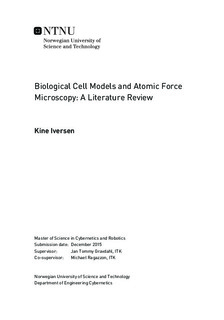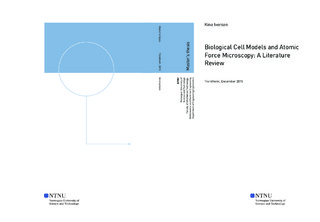| dc.description.abstract | Mechanical properties of cells can be used in diagnostics of various diseases. It has been proven, by several independent research groups, that sick and healthy cells differ in stiffness. Being able to extract this information will help bring medicine forward.
The Institute of Engineering Cybernetics at NTNU is in possession of an Atomic Force Microscope, which can be used to image and probe cells. They aspire to use their knowledge within parameter identification to identify and estimate unknown parameters in models of biological cells. The first step in this process is to obtain an overview of existing models and see which of them that are suited for this purpose. This has been the aim of this thesis.
The work conducted on cell mechanics either views the cell as an elastic material or a viscoelastic material. Due to these different interpretations, the field appears confusing. The cell is viscoelastic, but it can be approximated as elastic to simplify calculations. In this work, both these modelling approaches are discussed. Comments about parameter estimation have also been included to make this thesis an adequate basis for further work on this topic.
The target group of the thesis are readers with a mathematical understanding, but limited knowledge about biology and cell mechanics. However, this review can be useful for anybody that is interested as no existing work is comprehensive enough in the discussion of both elastic and viscoelastic models. By the end of the thesis, the reader will have obtained an overview of the field concerning cell mechanics. If a deeper insight is desired, the bibliography and a list of the most important articles found in the Appendix can serve as an excellent utility.
For the cell to yield a linear response, Atomic Force Microscopy experiments need to apply sufficiently small forces. Though this is a simplification of the reality, the corresponding models will be easier to perform parameter estimation on. They serve as a good starting point in the further work on parameter estimation in mechanical models of cells. | |

